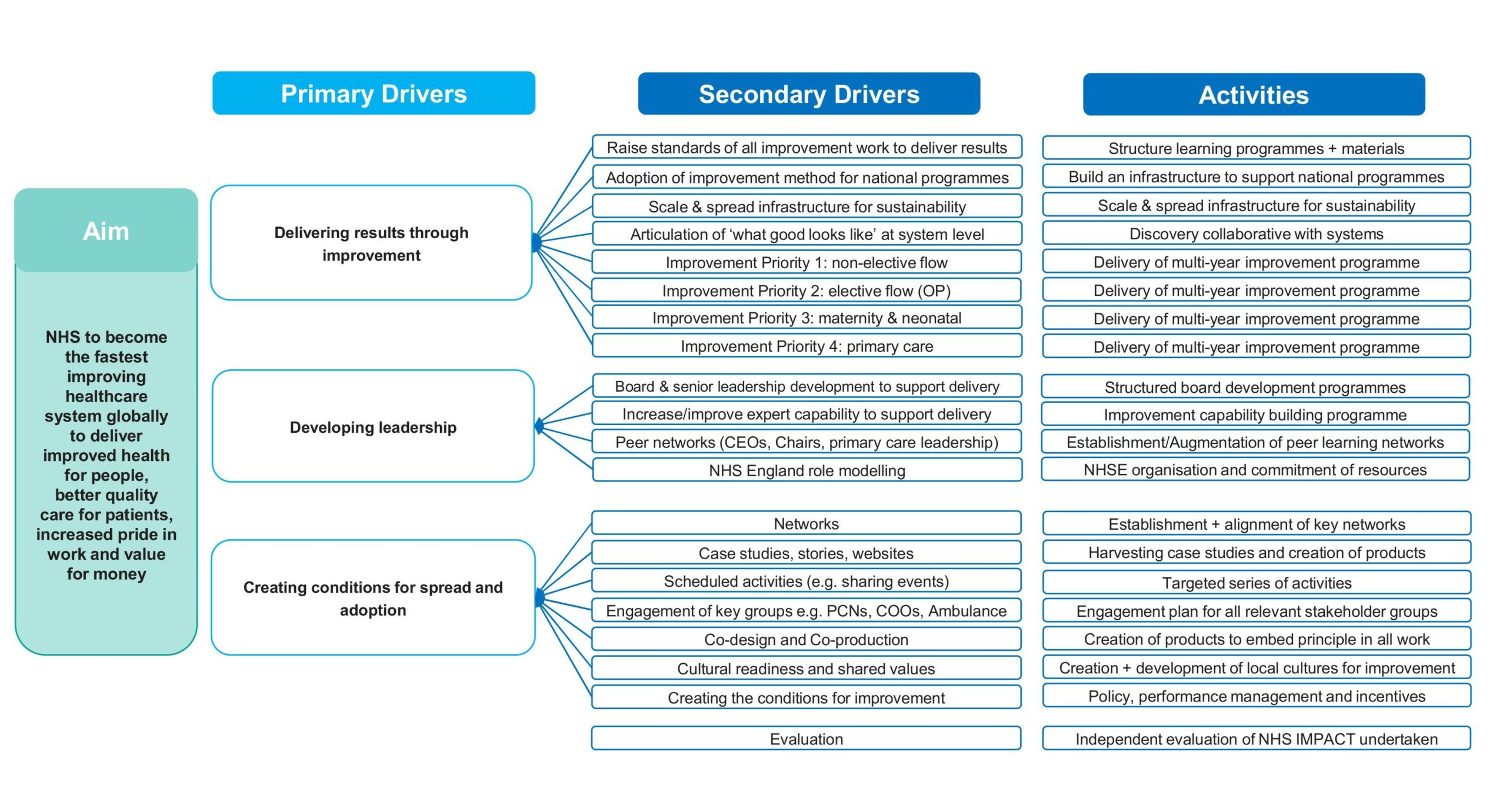The five components of NHS IMPACT
NHS IMPACT (Improving Patient Care Together) has been launched to support all NHS organisations, systems and providers to have the skills and techniques to deliver continuous improvement.
NHS IMPACT focuses on the 5 core components of all improvement methodology approaches. By focusing on the core components, systems and organisations are able to apply improvement in a concerted way towards our biggest challenges and opportunities. This is a shared improvement approach which will support the NHS to become the fastest improving healthcare system globally. The aim is to:
- create the right conditions for continuous improvement and high performance
- deliver better care for patients
- give better outcomes for communities
- improve working practices for colleagues whilst enabling systems and providers to better respond to today’s challenges.
The 5 components of NHS IMPACT
NHS IMPACT’s 5 components underpin a systematic approach that includes:
- Building a shared purpose and vision
- Investing in people and culture
- Developing leadership behaviours
- Building improvement capability and capacity
- Embedding improvement into management systems and processes
Example organisations who have embedded all 5 components
The case studies and resources on NHS IMPACT web pages have been curated by National Clinical Director for Improvement Professor Amar Shah to inspire those who may be considering adopting a quality improvement (QI) approach.
This publication from the Heath Foundation describes how building an organisation-wide approach to improvement is a journey that can take several years. It requires corporate investment in infrastructure, staff capability and culture over the long-term. It explains why organisation-wide improvement in health care matters, and how to get started.
To demonstrate a commitment to quality improvement Leeds Teaching Hospitals produced a stakeholder publication to describe their ambition to build a culture of continuous improvement.
The journey to a sustainable mainstream improvement culture is long and windy with some bumps along the way. This is a great guide to that journey, packed with tips and insights in the voices of those who have led the work in Lancashire Teaching Hospitals.
This case study describes Central and North West London Foundation Trust’s emphasis on expert by experience involvement, their approach to spread improvement success around the trust; how they embed training and their annual celebration of improvement.
Building the business case for quality improvement: a framework for evaluating return on investment is presented through this case study from East London Foundation Trust.
Our ambition
NHS IMPACT is a single improvement approach to shaping strategy. It is underpinned by continuous improvement and encourages organisations, systems and providers to share best practice and learn from one another.
It will inform the way we work across services and create the conditions in which continuous improvement is the “go to” method for tackling clinical, operational and financial challenges.
Continuous improvement methodologies are not the same, but they are linked together by some key principles.
When these 5 components are consistently used, systems and organisations create the right conditions for continuous improvement and high performance, responding to today’s challenges, and delivering better care for patients and better outcomes for communities.
Our overarching ambition is an NHS in which every organisation, including NHS England, has the capability, capacity and the right leadership behaviours to enable staff to solve the problems that matter to them, their patients and their populations. This involves working with their partners to deliver better life chances and better outcomes for those patients.
It’s important that NHS IMPACT is applied holistically, and we recognise that we may all be at different stages of the journey. NHS IMPACT may take time to be deeply embedded for those who are new to this way of working.
As NHS IMPACT shapes and develops, more resources to support you will become available.
A single improvement approach
The driver diagram below shows the relationship between NHS IMPACT’s aims and the routes to achieving them. For an accessible version, visit our NHS IMPACT driver diagram information and download.
Additional resources
NHS IMPACT bulletin
Subscribe to the NHS IMPACT (Improving Patient Care Together) bulletin

